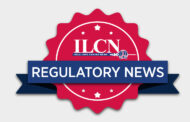HER2 can be aberrantly expressed in NSCLC, caused by its mutation and/or amplification.1 Like in breast cancer, patients with NSCLC with somatic HER2 mutations rarely show concurrent gene amplification, highlighting mutation as an independent factor.2 However, previous clinical trials with HER2-targeted agents have yielded disappointing results in HER2-mutant NSCLC. Although only accounting for a minority of patients with NSCLC, new data targeting HER2 mutations suggest that this seems to be a feasible strategy.
In a multicenter, single-arm phase II trial, Zhou et al. explored the efficacy of pyrotinib, an irreversible EGFR/HER2 tyrosine kinase inhibitor (TKI) as second- or later- line therapy in patients with NSCLC with HER2 mutations3 (their presence determined by next-generation sequencing [NGS]). Among 60 patients recruited, 49 had HER2 in frame exon 20 insertions. Independent review committee (IRC)-assessed objective response rate (ORR) measured 30%, present across all subgroups. The median progression-free survival (mPFS) was 6.9 months, and median overall survival (mOS) was 14.4 months. The major toxicity was diarrhea, preventable by prophylactic loperamide, akin to experiences with other TKIs targeting HER2 such as neratinib or lapatinib. This ORR of 30% exceeds that of the several previously reported pan-HER TKIs with ORRs ranging from 0% to 19%, but comparison across studies is fraught with difficulties.4 In the phase II ZENITH20 trial, another pan-HER TKI, poziotinib, demonstrated a 28% ORR in later-line treatment for patients with NSCLC with HER2 exon 20 insertions: mPFS was 5.5 months, and the toxicity profile was similar to that of pyrotinib.5
Other than HER2 TKIs, antibody drug conjugate (ADC) drugs, such as ado-trastuzumab emtansine (T-DM1) and trastuzumab deruxtecan (DS-8201, T-Dxd), are also being evaluated in this setting. A confirmed ORR of 62% for patients with HER2-mutated NSCLC was demonstrated with DS-8201 in a DESTINY-Lung01 cohort (42 patients),6 numerically higher than that of pyrotinib; mPFS reached 14 months, and median OS was not reached. This also exceeds that of T-DM17 and trastuzumab in combination with chemotherapy in a retrospective analysis.8 Preclinical research suggests that co-treatment using a pan-HER TKI in the context of an ADC would lead to more inhibition of HER2 downstream pathways than monotherapy.9
Due to the nature of ADCs with their chemotherapy payload linked to an antibody, there are toxicity issues: DS-8201 contains a topoisomerase I inhibitor with a high drug-to-antibody ratio of 8:1—the drug-emergent adverse effects (AEs) are higher than TKIs. In terms of toxicity, grade 3 or higher treatment-related AE of DS-8201 occurred in 52% patients, numerically higher than that of pyrotinib (27%), with drug-related dose reductions required in 38% versus 5% for pyrotinib. Similar to EGFR-addicted NSCLC and HER2-positive breast cancer, brain metastases often develop in patients with HER2-mutated NSCLC. In Zhou’s study, subgroup analyses suggest that patients with or without brain metastases had similar clinical benefits from pyrotinib in terms of ORR. Whether a HER2-ADC would be beneficial to patients with HER2-mutant NSCLC who also have brain metastases remains to be determined, akin to tucatinib in the HER2CLIMB study in breast cancer.10
Previously developed for treating HER2-expressed or mutated breast cancer,11 pyrotinib has potentially filled the gap of unmet needs in this rare mutation in NSCLC. A phase III trial, PYRAMID-1 (NCT04447118), is ongoing to confirm its PFS benefit as a primary endpoint compared with docetaxel in subsequent lines of therapy for patients with these mutations. There are still many questions left unanswered, including resistance mechanisms of HER2-targeted therapy,12 predictive significance for different types of mutation,13 and de novo versus acquired mutations. HER2-targeting agents may perform better in the first-line rather than second- or later-line settings, as real world data suggest.14 Single-arm studies rarely inform other single-arm studies, and comparing across these trials gives poor guidance for efficacy and safety in subsequent phase III randomized studies. As for ALK and ROS1 fusions in NSCLC, in a common disease even a small sub-group can be studied with adequately powered randomized studies, and sub-groups within these, such as those with brain metastases, deserve particular attention. Limitations such as the lack of control arm in the current study and few patients with missense mutations can then be addressed.
References:
- Arcila ME, Chaft JE, Nafa K, et al. Prevalence, Clinicopathologic Associations, and Molecular Spectrum of ERBB2 (HER2) Tyrosine Kinase Mutations in Lung Adenocarcinomas. Clin Cancer Res. 2012;18(18):4910-8.
- Jebbink M, de Langen AJ, Boelens MC, et al. The force of HER2 – A Druggable Target in NSCLC? Cancer Treat Rev. 2020;86:101996.
- Zhou C, Li X, Wang Q, et al. Pyrotinib in HER2-Mutant Advanced Lung Adenocarcinoma after Platinum-based Chemotherapy: A Multicenter, Open-label, Single-arm, Phase II study. J Clin Oncol. 2020;38(24):2753-61.
- Baraibar I, Mezquita L, Gil-Bazo I, et al. Novel Drugs Targeting EGFR and HER2 Exon 20 Mutations in Metastatic NSCLC. Crit Rev Oncol Hematol. 2020;148:102906.
- Spectrum Pharmaceuticals Announces Positive Topline Results in HER2 Exon 20 Insertion Mutations from Cohort 2 of the Poziotinib ZENITH20 trial. News release. July 27, 2020 Accessed July 28, 2020. https://bit.ly/39GKHpp.
- Smit E, Nakagawa K, Nagasaka M, et al. Trastuzumab Deruxtecan (T-DXd; DS-8201) in Patients with HER2-mutated Metastatic Non–Small Cell Lung Cancer (NSCLC): Interim Results of DESTINY-Lung01. J Clin Oncol. 2020;38(15_suppl):9504.
- Hotta K, Aoe K, Kozuki T, et al. A Phase II study of Trastuzumab Emtansine in HER2-positive Non–Small Cell Lung Cancer. J Thorac Oncol. 2018;13(2):273-9.
- Mazieres J, Barlesi F, Filleron T, et al. Lung Cancer Patients with HER2 Mutations Treated with Chemotherapy and HER2-targeted Drugs: Results from the European EUHER2 Cohort. Ann Oncol. 2016;27(2):281-6.
- Li BT, Michelini F, Misale S, et al. HER2-mediated Internalization of Cytotoxic Agents in ERBB2 Amplified or Mutant Lung Cancers. Cancer Discov. 2020;10(5):674-87.
- Lin NU, Borges V, Anders C, et al. Intracranial Efficacy and Survival with Tucatinib plus Trastuzumab and Capecitabine for Previously Treated HER2-positive Breast Cancer with Brain Metastases in the HER2CLIMB trial. J Clin Oncol. 2020;38(23):2610-19.
- Li X, Yang C, Wan H, et al. Discovery and Development of Pyrotinib: A novel Irreversible EGFR/HER2 Dual Tyrosine Kinase Inhibitor with Favorable Safety Profiles for the Treatment of Breast Cancer. Eur J Pharm Sci. 2017;110:51-61.
- Nunes J, Zhang H, Angelopoulos N, et al. ATG9A Loss Confers Resistance to Trastuzumab via c-Cbl Mediated HER2 Degradation. Oncotarget. 2016;7(19):27599-612.
- Chuang JC, Stehr H, Liang Y, et al. ERBB2-mutated Metastatic Non–Small Cell Lung Cancer: Response and Resistance to Targeted Therapies. J Thorac Oncol. 2017;12(5):833-42.
- Xu F, Yang G, Xu H, et al. Treatment Outcome and Clinical Characteristics of HER2 Mutated Advanced Non–small Cell Lung Cancer Patients in China. Thorac Cancer. 2020;11(3):679-85.
Disclosures:
JS’ competing interests can be found at https://www.nature.com/onc/editors. LP none declared.






